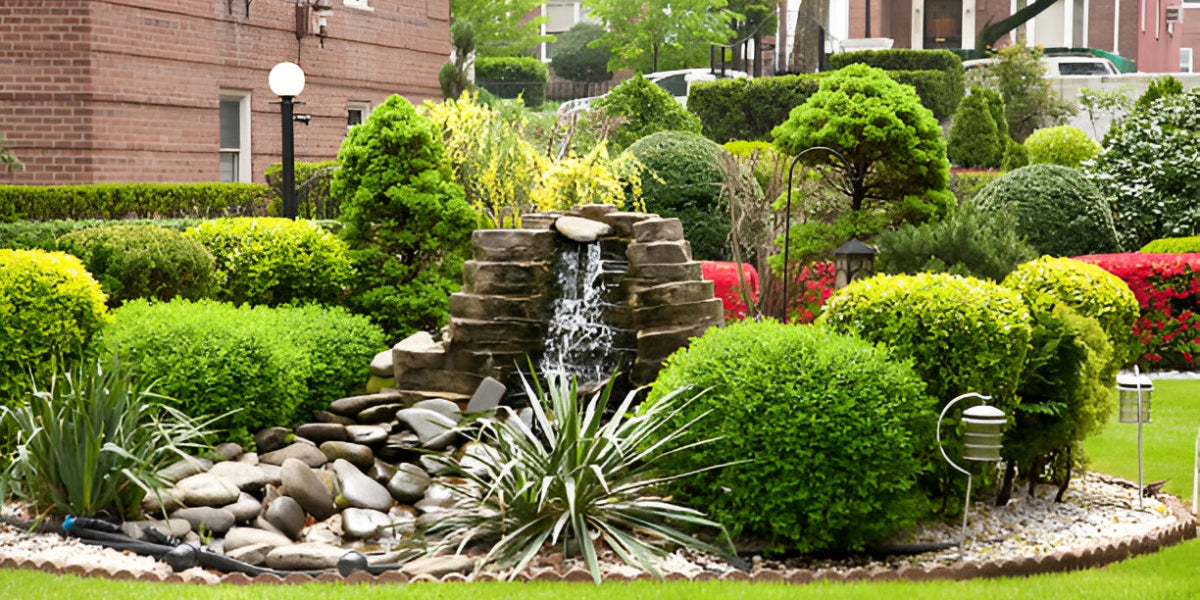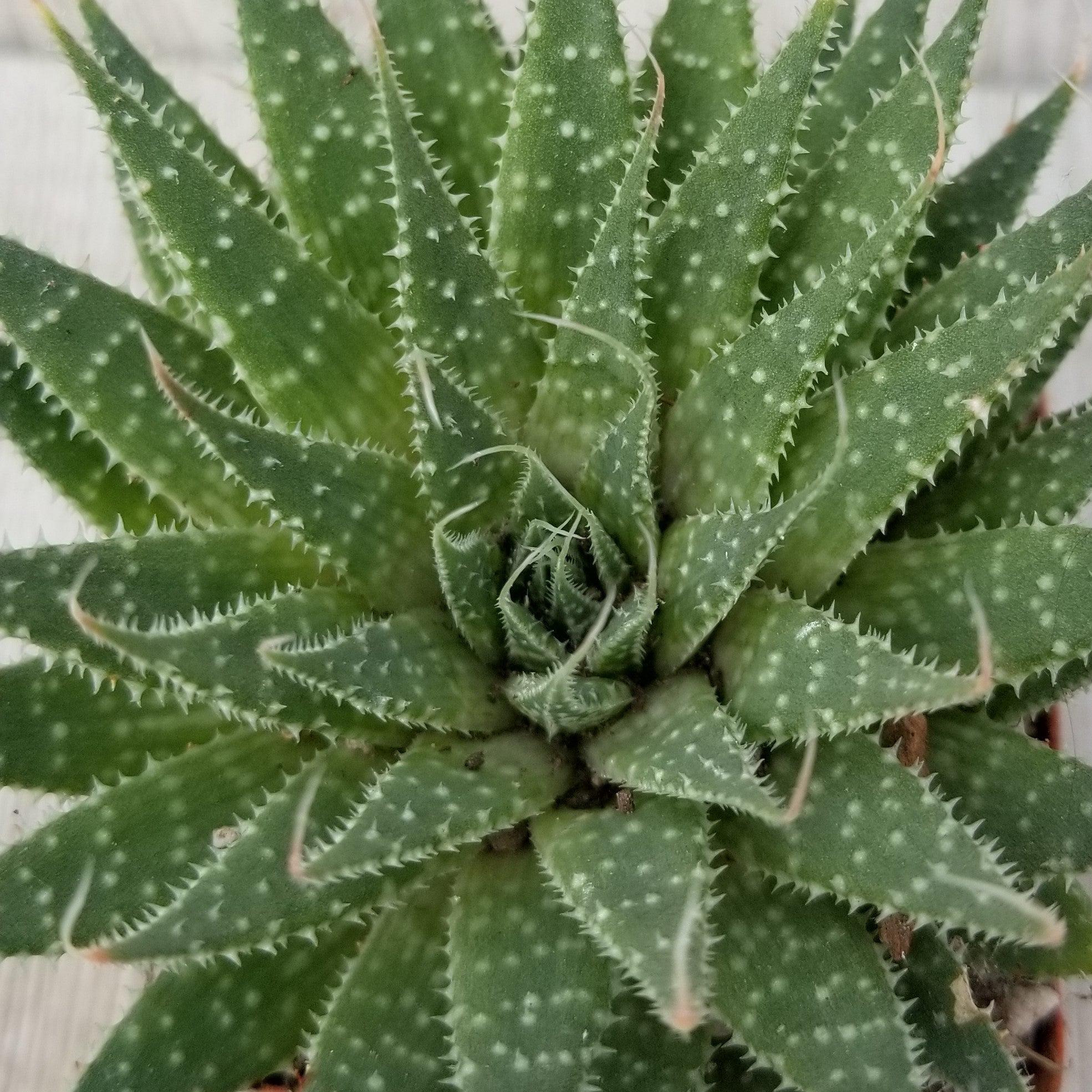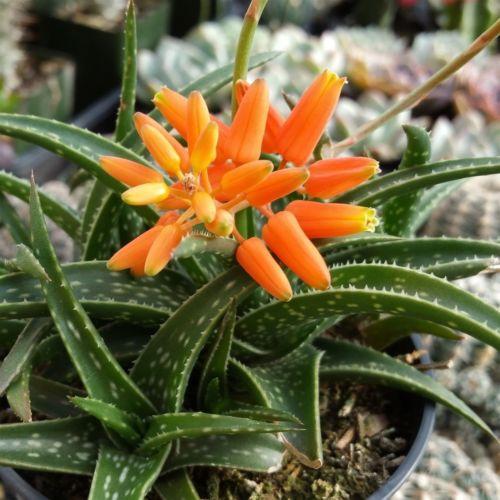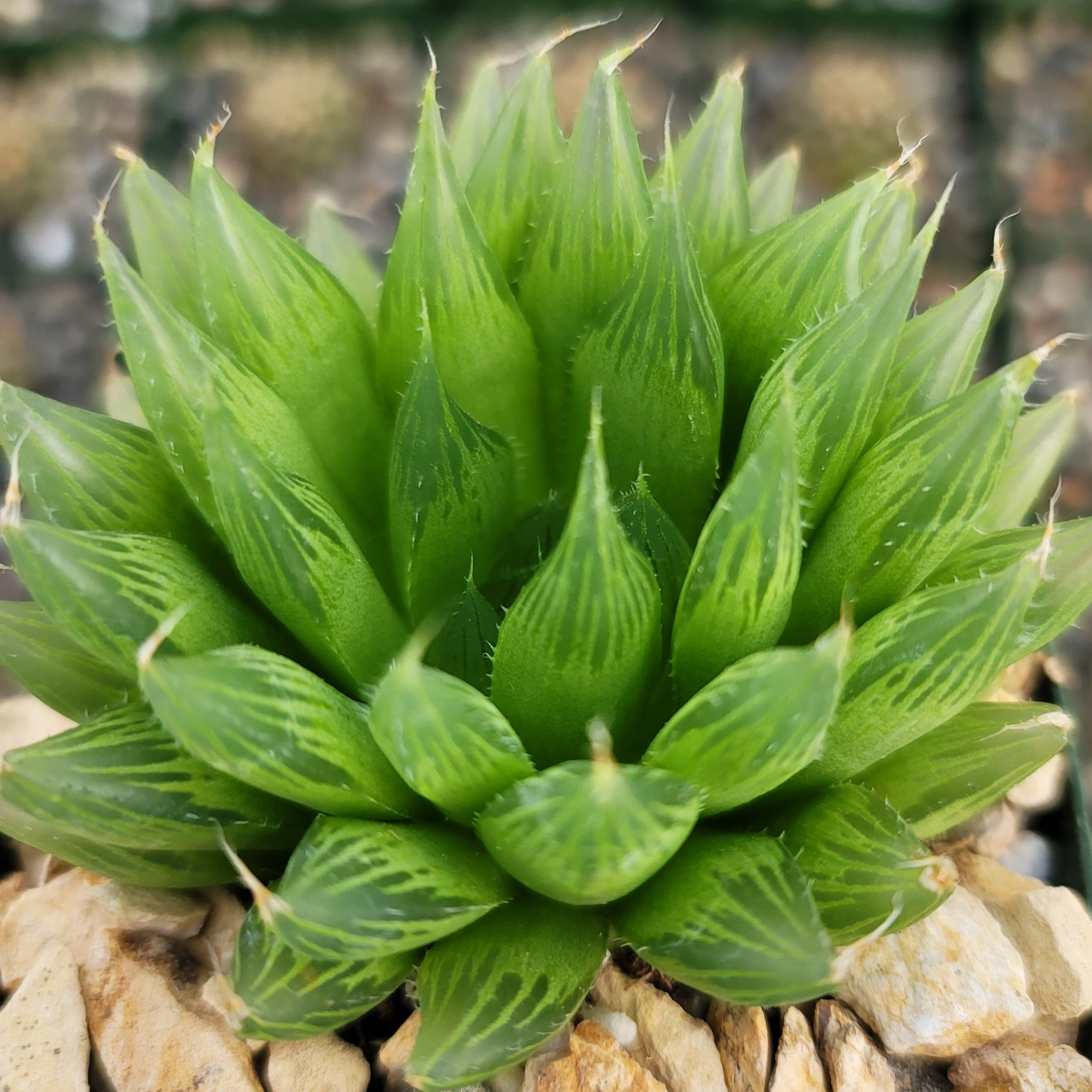Bunny Ear Cactus 'Care and Growing guide' - Everything You Need To Know!
Updated: January 28, 2025

The Bunny ear cactus is a popular charming desert plant that will instantly catch your eye with its unique appearance. It get its name from its distinctive pads that resemble the adorable ears of a bunny. With its fuzzy, soft spines and vibrant green color, add a touch of whimsy to any plant collection. Don't be fooled by its cute appearance; it is a beginner-friendly, low-maintenance, and eye-catching.
In this comprehensive guide, we'll dive into everything you need to know about Bunny ear cactus so that you can enjoy this exotic beauty safely and happily.
About Bunny Ear Cactus

The Bunny ear cactus, known as Opuntia microdasys, which is a popular houseplant that belongs to the Opuntia (Prickly pear cactus) genus.
Native to Northern Mexico, it can grow up to 3 feet tall and 5 feet wide.
The bunny ear cactus has several other common names such as Angel’s wings, Polka-dot cactus, bunny cactus, or rabbit cactus.
It is noted for thick pads that are covered in short bristles, resembling the ears of rabbits. These rabbit ear plants are slow-growing and usually take up to 20 years to reach their eventual height.
These bunny cacti do not develop spines and instead form fuzzy whitish brown glochids that can easily come off from the pads.
Each white "dot" on the surface of the bunny ear cactus is a glochid, which are patches of hundreds of small spines. They are barbed and thinner than human hairs, and they detach in large numbers with the slightest touch. Thus, when handling a bunny ear cactus, exercise caution and, if necessary, wear protective gloves.
A Closer Look at the Bunny Ear Cactus Flowers
During the spring and summer, these adorable bunny ear cacti produce amazing flowers that will make your heart skip a beat. Bunny ears bloom bowl-shaped creamy yellow flowers that are 2 inches wide in diameter. They're like little bursts of joy on top of those green pads.
Each blossom has multiple petals that come together to create this beautiful cup shape. They don't stick around for too long. These bunny ear cactus blooms only last for a few days, so you've got to keep your eyes peeled and appreciate their beauty while you can.

When it is in the ground, the plant blooms plentifully. However, when grown in containers, flowering is not seen very often. These flowers develop into 2 inches long red to purple-colored fruits.
Bunny Ear Cactus Care
When it comes to taking care of your Bunny Ears Cactus, there are a few important things to remember. The bunny succulent grows well in dry areas, with plenty of sunlight and minimal watering. So, if you provide them with dry and low humid conditions, they will thrive beautifully. Just keep these tips in mind to keep your cactus happy and healthy.
Quick Reference

Bloom Season

Flower Color

Growth Rate

Hardiness Zone

Mature Size

Plant Type

Sun Exposure

Toxicity

Watering Needs
Understanding the Watering Needs to Keep Your Bunny Cactus Hydrated
Bunny ear cactus is adapted to receiving less rainfall and is drought-tolerant. In the spring and summer, during the growing season, it's essential to water your cactus thoroughly but allow the soil to dry out between waterings. This helps prevent overwatering, which can lead to root rot. Aim to water your Bunny Ear Cactus about once every 1-2 weeks, depending on the humidity and temperature of your environment.
As the seasons transition into fall and winter, the cactus enters a dormant period. During this time, it requires less water. Reduce the frequency of watering to once every 3-4 weeks, allowing the soil to dry out more thoroughly between waterings. Be mindful of the temperature and humidity levels during winter, as they can affect the watering needs. If your Bunny Ear Cactus is kept in a cooler environment, it may require even less water.
Let the soil dry out completely between waterings and avoid overwatering as it can lead to root rot.
Lighting Tips for Your Bunny Ear Cactus
The Angel’s wings cactus grow well in a sunny spot. If grown indoors, place your plant in a west or south-facing window.
You can also use a grow light with a white fluorescent tube for 14 to 16 hours each day.
If you notice your bunny ear cactus leaning towards the light, rotate it every once in a while to promote even growth.
When planted outdoors, ensure the heat-loving succulent gets 6 to 8 hours of direct bright sunlight. During winters, the plant prefers partial shade.
They can tolerate some direct sunlight, but it's still a good idea to provide some shade during the hottest part of the day to prevent sunburn.

Remember, if you live in a region with extreme heat, it's best to provide afternoon shade to protect your cactus.
Unveiling the Secret Recipe of Soil and Fertilizers for Your Bunny Cactus
Bunny ears cactus likes very airy, porous, nutrient-rich soil with a pH of 6.1 - 7.8. Cacti require fast-draining soil that dries completely between waterings. Your soil must have a sandy texture and a low water-holding capacity, just like desert soil. Soggy wet soil can damage your cactus and contributes to bacterial and fungal rot. In addition, because of a lack of oxygen, soggy soil substitutes air pockets with water, resulting in an anaerobic environment that can kill your plant.
Additionally, you can make your own soil mix as well by using a combination of regular potting soil, perlite, and coarse sand. Ideally, you want to use our specialized cactus potting mix that contains 5 natural substrates and organic mycorrhizae to promote the development of a strong root system that helps your cactus to thrive.
When it comes to fertilizing your bunny ear cactus, it's best to use a balanced NPK fertilizer specifically formulated for cacti. Look for a fertilizer with a ratio of 5-10-5. You can apply the fertilizer once a year during the actively growing season, which is typically spring. Be sure to dilute the fertilizer to half strength to avoid burning the roots.
Finding the Perfect Temperature for your Cactus to Thrive
When growing indoors, these cacti prefer a warm and dry environment. Ideally, they thrive in temperatures ranging from 65°F to 85°F. It's important to keep them away from drafts or sudden temperature fluctuations, as they can be sensitive to extreme changes.
For outdoor cultivation, your bunny ear cacti are typically hardy in USDA zones 9 to 11. These zones generally have mild winters and warm to hot summers. If you live in a colder climate, it's best to keep your bunny ear cactus indoors during the winter months or provide protection from frost and freezing temperatures.

As for humidity, bunny ear cacti are native to arid regions and can tolerate low humidity levels. They can adapt to a wide range of humidity, but they prefer a drier environment. Aim for a humidity level of around 30% to 50% for optimal growth. Avoid excessive moisture or high humidity, as it can lead to fungal diseases and rot.
Repotting Your Bunny Ears Cacti
You can re-pot the Bunny plant at the end of summer when they stop blooming. Repotting should be done every one or two years. Keep in mind to repot your cactus in a pot that is one to two inches bigger than the current one. Apart from this, covering hands or using an old cloth to handle the succulent is advised as the glochids can hurt. After repotting, give your plant a week to recover and then, start watering and place in direct sun. Avoid using fertilizer for a month.
How to Propagate Bunny Ear Cactus?
The propagation process of this plant can be done in two ways:
Cuttings/Divisions
- The best time to propagate these cacti is in spring or early summers when the plant is growing. Let’s look at the steps involved in the process.
- Break a mature pad from the parent plant- To begin with, remove one of the fully grown pads from the cactus. Make sure to wear gloves as the glochids may irritate your skin.
- Set the pad aside to dry out- This step requires the base of the cutting to callous over for a day or two.
- Plant the cutting- Pot the dried pad in a container filled with a cactus potting mix or well-draining soil. Bury the cutting an inch beneath the soil.
- Place in a sunny spot- Keep the container in a location that gets a few hours of direct sunlight every day until the roots start to sprout.
- Water the plant- After propagation, it is vital to water the cactus frequently in the first year as it ensures the root system stays healthy and develops faster.
Here at Planet Desert we sell Bunny ear cactus cuttings, if you don't want to go through the hassle of propagation or dealing with cuttings, you can still get a bunny ear cactus cuttings without any trouble.
Seeds
Growing bunny succulents from seeds is more challenging than from cuttings. It is because seeds are very small in size, making it difficult to place as the wind can easily blow them away. Let’s see how to plant seeds and propagate bunny succulents.
- Fill the planter with regular cactus potting soil.
- Take out the seeds with clean hands and gently sow them on top of the soil.
- Let it dry out and recover for a couple of days before watering.
- Once settled, you can start watering the plant and place it in the bright sun.
Common Problems with Rabbit Ear Cactus
- Mealybugs – You may witness mealybugs and scale insects being attached to the bunny succulent. They are not healthy as they cause white patches on the pad surface. Pest control can be done by taking a cotton pad dipped in 70% isopropyl alcohol and pressing the pests with it.
- Stopped growth - Overwatering or underwatering leads to this problem. Observe and work on the watering routine.
- Drooping of the succulent - A plant wilts when it is grown in poorly draining soil or exposed to excess direct light.
- The appearance of Brown spots - Sudden drop in temperature or insects can be the reason for brown patches on the pads of your cactus.
- Dried-up pad tips - Overwatering Angel’s wings is harmful, especially during dormancy. It also leads to the stem base rotting. As it is a drought-tolerant species, periodic watering works the best.
Where to Buy Bunny Ears Cactus?
When it comes to buying Bunny Ears Cactus, most nurseries might not have it; then you may have a hard time finding bunny ear cactus near you. Planet Desert is your easiest and best option if you're looking to buy affordable cacti online and have them conveniently shipped right to your door!
Here at Planet Desert, we have a large selection of over 500 cacti & succulents in stock and we guarantee they will arrive happy and healthy.
Bunny Ear Cactus Quick Growing Reference Guide
| Bloom Season | Spring, Summer |
|---|---|
| Botanical Name | Opuntia micodasys |
| Common Name | Bunny ear cactus, angel's wings cactus, polka dot cactus, bunny cactus |
| Dormancy | Winter |
| Family | Cactaceae |
| Flower Color | Yellow |
| Genus | Opuntia |
| Growth Habit | Dense shrubs |
| Growth Rate | Slow |
| Hardiness Zone | 9, 10, 11 |
| Mature Size | 3 ft. tall, 5 ft. wide |
| Native Area | Mexico |
| Plant Type | Perennial cactus |
| Propagation | By Cuttings, divisions, seeds |
| Resistance | Drought tolerant, heat tolerant, deer resistance |
| Soil PH | Acidic, Neutral |
| Soil Type | Specialized Cactus potting mix |
| Special Features | Rabbit like unique sahpe |
| Sun Exposure | Full sun, partial shade |
| Toxicity | Friendly to humans, Friendly to cats, Friendly to dogs |
| Watering Needs | Low |
Final Thoughts
Overall, the bunny ear cactus (Opuntia microdasys) is a popular choice that requires minimal care. With its adorable bunny ear-shaped pads, it adds a touch of charm to any space. This low-maintenance plant thrives in bright, indirect light and prefers well-draining soil. When it comes to watering, it's important to remember that less is more. Allowing the soil to completely dry out between waterings is key to prevent overwatering and keep your bunny ear cactus happy. With its resilient nature, it's perfect for both experienced plant enthusiasts and beginners alike. So, if you're looking for a plant that's easy to care for and visually captivating, the bunny ear cactus is the way to go!
Frequently Asked Questions
-
Is bunny ear cactus poisonous?
The bunny ear cactus (Opuntia microdasys) is generally considered non-toxic to humans and pets. However, like with any plant, it's always a good idea to keep it out of reach of curious pets or small children, just to be on the safe side. If ingested in large quantities, the spines can cause irritation or discomfort, so it's best to handle the cactus with care. But don't worry, as long as you take the necessary precautions, you can enjoy the beauty of the bunny ear cactus worry-free.
-
Do bunny ear cacti produce fruit?
Yes, the bunny ear cactus does have the potential to produce fruit! After the cactus blooms with beautiful yellow flowers, it can develop small, edible fruits called prickly pears. These fruits are typically red or purple and have a sweet, juicy flavor. These fruits are typically enjoyed by birds and other wildlife in their natural habitat.
-
Do bunny ear cacti grow fast?
Bunny ear cacti are known to be relatively slow-growing compared to other types of cacti. However, with proper care and ideal growing conditions, they can still grow at a moderate pace.
- Place in bright, indirect sunlight.
- Use well-draining cactus or succulent soil.
- Water sparingly, allowing the soil to dry out between waterings.
- Provide good airflow to prevent moisture buildup.
- Keep away from drafts or extreme temperature changes.
- Fertilize sparingly during the growing season (spring).
- Handle with care to avoid contact with the spines.
- Prune or remove any dead or damaged pads as needed.
























